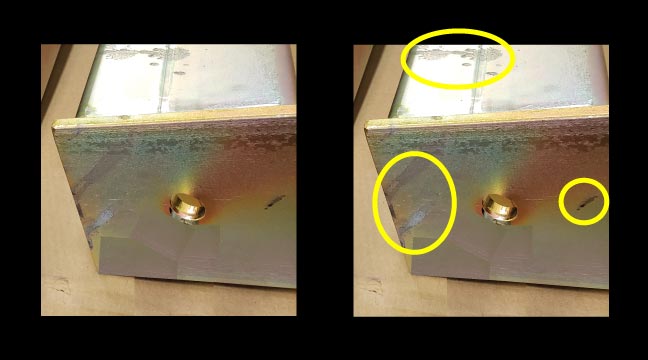Exceptional plating quality is a shared responsibility between the plater and the customer. To be sure, most of the responsibility is ours, but there are things you can do that will enable us to give you the best results possible.
If the part you’re having plated is hollow with a closed end that has one or more holes in it, it’s critical to make sure the hole is large enough on both ends to allow adequate drainage. (The holes also play an important role in letting air exit to prevent air pockets from building.)
Your part will spend a fair amount of time in our cleaning solutions, which consist of some highly caustic chemicals. When we remove the parts from the solution, we suspend them in air to allow the solution to drain out. But if the holes in the ends aren’t large enough, some of the solution will linger inside the part. Inevitably, at some point in the process the solution will leak onto the part or nearby parts.
The hole in the plate at the end of the part shown above isn’t large enough to allow adequate drainage. Solution from other identical parts has leaked onto this part, and this caused the black and gray marks circled on the right. Not only is this unattractive, it removed some of the zinc plating, and this can lead to corrosion and rusting. The fact is that if this hole had been only about half an inch wider, there would have been no problem.
The moral: if you have a similar part and you’re not sure the holes are big enough, email us a photo before you ship the parts to us. After all, if you need to make the holes larger, it’s better to do it before your shipment rather than after . . . right?

